Curious facts 3 - What do animals see?
Curios Facts round 3 is up, courtesy of @river-island! :)
We see an amazing world full of detail and colour, but what do other animals see?

What does your pet see? Source.
Let’s have a look at vision and why we see colours in the first place.

If the human eye was a digital camera it would have over 500 mega-pixels!! Source.
When light is reflected off an object into your eyes (1), it is picked up by two kinds of cells (2). The first, rods, simply detect light. The other cells, which detect colour, are called cones. Cones will be sensitive to a specific colour – red, green or blue. When a blue cone, for example, receives blue light it will send a signal to the brain (3-4), but not when it senses green or red light. The brain then picks up these combinations of signals to produce an image in our mind (5).

Colour is about light frequencies. Cones filter which frequencies we see. Source.
Colourblindness has a purpose
Different animals have different cones and rods in their eyes, so will see colours differently. Most mammals only have two kinds of cones, meaning they will be colourblind. What colours they see exactly depends on what cones are missing, but the illustration below shows roughly how dogs will mostly see yellows, browns and blues for example. While this may seem odd to us, it is actually really useful for picking out prey hiding in grass or bushes.

Most mammals are colour-blind in one way or another. Source.
Some social mammals, like monkeys, will be missing different coloured cones within the same group. This allows the whole group to see a whole variety of colours so that they can see different kinds of predators more easily. This might also explain why roughly 15% of people are colour-blind (mostly men).
Do insects have kaleidoscope vision?
Many small creepy crawlies only have very rudimentary rods and no cones, meaning they can only detect whether there is light, or pick out blurry shapes. This is only useful for figuring out whether its day or night, but not good for avoiding prey!
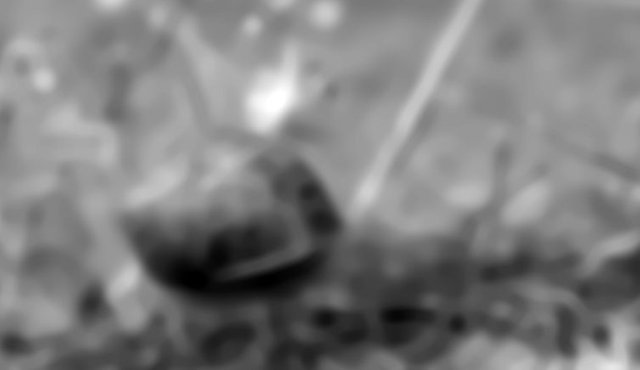
How snails see things. Source.
Other insects have what are called composite eyes, meaning they have lots of tiny little eyeballs which make up one big eye. In fact, each mini-eye is like one of our rods or cones, except that they are placed on the outside of the eye rather than inside.
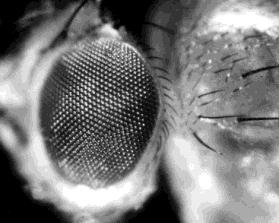
All for one. Source.
So each mini-eye picks up a part of the bigger picture and sends it to the brain where the image is reconstructed. So while we like to represent bug vision as a kaleidoscope of images, their eyes actually work very much like our own.
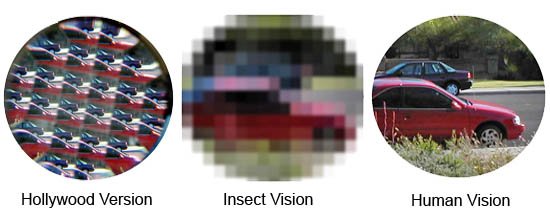
A bug’s life. Source.
Seeing more than colour
But vision is not just about colour. Many animals have cells which enable them to see in other frequencies. Rats and birds can see all the colours we see, plus ultraviolet (UV) light. So what can seem like bland plumage to us is in fact a colourful display to other birds.
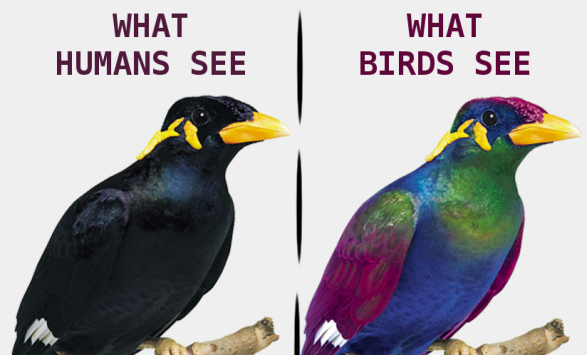
This is what a bird or rat sees compared to a human. Source.
Bees and some other insects can also see UV light but lack one or two colours, meaning everything will be a bluish base plus some other colours.
https://qph.ec.quoracdn.net/main-qimg-a3935de37a4481d2407a3b9302266319-c
How bees see dandelions. Source.
Multispectral magic
The champion of sight in the world, however, is the peacock mantis shrimp (which isn’t actually a shrimp but more of a lobster).
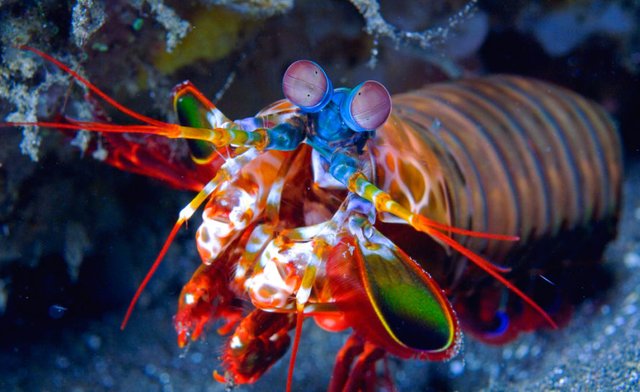
Hiding, warning, or raving? Source.
These crustaceans have a massive 16 different kinds of photoreceptors (where we only have 3: red, green and blue). This allows them to see colours between the colours we see (hyperspectral colouring) as well as ultraviolet light, polarised light, infrared, and a ton of other light frequencies.
They can also move their eyes independently and see in two different directions at once, allowing them to find prey and avoid predators at the same time. What’s even more amazing is that each eye conveys depth independently. In fact, a peacock shrimp’s vision is so crazily complex there is no way of imagining or representing what it would look. The types of light they can see is off the charts in terms of animal vision.
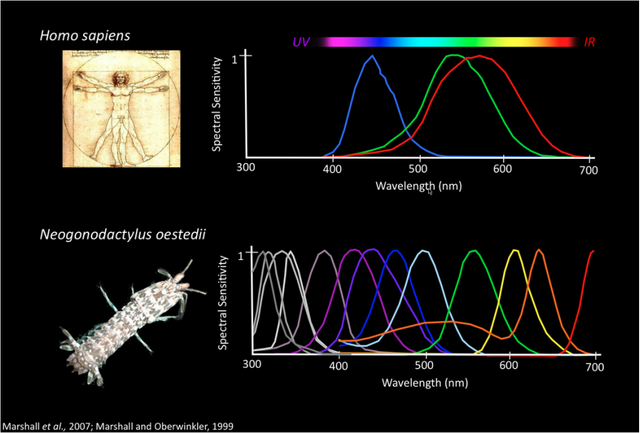
Is there anything peacock shrimp can’t see? Source.
Happy Steeming and fact finding!
I would sure want to try that lobster/shrimp vision ;)
Very curious :)
Peace
haha I imagine it might look something like this to us - defo would be fun to try ><

Haha lol probably :)
Thank you for participating in Curious Facts Contest #3
Great entry! Wow 😮 Much appreciated you share these facts and the pictures to show what do animals really see.
Resteemd and upvoted your entry.
Thanks! Blew my mind away as well when I saw some of these photos!
This is fascinating! Poor snails, it seems we need to hand out some tiny spectacles so they can see better.